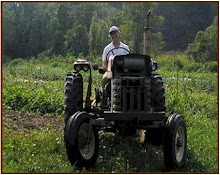Arugula is best when used soon after receiving it in your share. To store in the refrigerator, try placing paper towels in between layers of the leaves and putting it in a plastic bag with the air squeezed out.
Arugula has a sharp, peppery flavor and can be eaten raw (salads), steamed or added to other cooked dishes (pastas,soups).
Beets
Beets should be refrigerated where they should last for a few weeks with no problem.
Beets are peeled after cooking. After cooked and cooled enough to touch, squeeze the beet slightly until the skin pops off. Cooking methods include: baking, boiling, steaming and roasting. Boiling is the fastest, but you may lose some flavor and color with this method. Baking preserves the color the best. If steaming, make sure you use enough water, as it will take 15-20 minutes to cook through. Of course you can also use them raw, as they are popular grated on salads or as a garnish.
Butternut Squash
Butternut Squash should be stored in a cool, dry, dark place and should last for weeks.To prepare, wash and cut lengthwise. Remove the seeds, can be peeled if desired. Can be roasted (cut side down), or cut into cubes and steamed, satueed or even boiled.
Carrots
Carrots should be stored in the refrigerator and should last at least a week or two.
Of course carrots can be added to your favorite soup or steamed, but they are so delicious they may not make it past the raw eating stage in your house!
Collard Greens
Collard greens should be stored like the other greens, in a bag in a refrigerator, and should last up to a few weeks. Collards do need to be cooked a little longer than the other greens, but are versatile and especially good in soups or stir-fried.
Kale
Kale should be stored in the refrigerator, and should last 1-2 weeks (make sure not too wet if in a bag). Kale is delicious, nutritious and versatile--one of our favorites for sure! It can be eaten raw, steamed, added to soups, or sauteed. A popular preparation for farm meals is Massaged Kale, which you can read about on the "Favorite Recipes" tab of the blog.
Microgreen Mix
This variety may include microgreens of: cabbage, radish (red and green), buckwheat, sunflower and kogane. The microgreen mix is more delicate than the sunflower microgreens on their own.The mix also does not store as long as the sunflower sprouts, so try to use them sooner. They can be used to enhance any salad, sandwich, wrap of anywhere else that you would add a raw green. There is a lot of nutrition packed in these tiny delicacies!
Pak Choy
Pak Choy can be stored in a bag in the refrigerator.
It is a mild, juicy green that can be sauteed, stir-fried, steamed or eaten raw. The stems are edible too, though they may take a slightly longer time to cook. The stems hold water, so are a refreshing snack raw.
Pe-tsai
Pe-tsai has a mild, juicy taste and can be added to soups or eaten like any other green.
Potatoes, Kennebec
Potatoes should be stored in a DARK, dry, cool location and should last for weeks.
Kennebec potatoes are very versatile, so fulfill your craving: mashed, baked, fried, you decide!
Salad Mix
Salad Mix
Our wonderful salad mix should be stored in an air-tight container with a piece of paper towel to absorb the excess moisture.
Summer Squash

Summer squash can be stored on the counter in a cool place out of the sun. Blanch and cool your squash to freeze.
Shiitake Mushrooms

Shiitake mushrooms are best stored in paper bags in the crisper drawer of the refrigerator. The paper bags will dry them out a bit, so you can place the paper bag inside a plastic one to conserve their natural moisture. However for longer term storage (5+ days), it is best to keep them in just a paper bag, as excessive moisture will speed up their decay
Shiitakes have a distinct flavor and a meaty consistency, which makes them versatile in many meals including: on pizzas, in omelots, sauteed (delicious with our greens), mixed with rice, or in almost any way you can imagine!
Spinach
(Photo Coming)
Spinach can be stored in the bag it comes in for about a week. If it seems like there is excess water in the bag, you can add a small piece of paper towel.
Regardless of how you are going to prepare spinach, you should remove the stems (they can be tough).
Spinach is easily overcooked. Briefly cook, just to wilt and reduce volume. Here are some general cooking times/methods:
Steam: 3-5 minutes
Blanch: 2-4 minutes
Stir-fry or Saute: 3-5
There is nothing "baby" about our spinach. It is always a favorite and is inredibly versatile. Makes a great fritatta when combined with mushrooms, or can be added to any pasta dish, and is fantastic all on its own as well.
Sunflower Microgreens
Sunflower microgreens should store well for a week or so in the plastic bag they come in. If they seem too wet, add a piece of paper towel to the bag.
Sunflower microgreens are a delicious and nutritious favorite of our CSA members. As someone recently wrote us "they are worthy as a snack all on their own," but you can also add them to salad, sandwiches, eggs, tacos, etc.
Sweet Peppers
Above is the variety of sweet peppers we grow here on the farm. From the top left, clockwise, they are:
Pimento, Orange Bell "Gourmet", Sweet Italian, Islander, Red Bell "King of the North.
Store peppers in a plastic bag in the refrigerator. To freeze, blanch and let cool.
Sweet Potatoes
Sweet potatoes usually cook faster than Irish potatoes. They also get mushy when overcooked. Whole potatoes will bake in about 45-60 minutes, while sliced potatoes can sauté in 5-8 minutes.
DO NOT REFRIGERATE! Store them in a warm (55-60F) place with a humidity of 75-80 %. Or you can parboil them for 2-3 minutes and then freeze.
Swiss Chard
Swiss Chard is the mildest of all the greens we grow. It is also incredibly nutritious! Store swiss chard like other greens, in a bag in the refrigerator and it should last up to a few weeks.
Both the stems and leaves are edible, but the stems usually take longer to cook soft. Chard can be added to soups, stir-fried with other vegetables (my favorite is to saute them with the shiitake mushrooms), or just cooked as a side on their own.
Turnips
(photo coming)
This variety is called Purple Top White Globe. These roots should store fine in your refrigerator for up to a few weeks. Turnips can be eaten raw by grating them into a salad or marinating for a veggie plate. They can also roasted with other roots or even mashed like potatoes.
Tatsoi
Tatsoi can be stored in a bag in the refrigerator.
Tatsoi is a mild tender green that can be eaten raw or lightly cooked.





























































































































































































